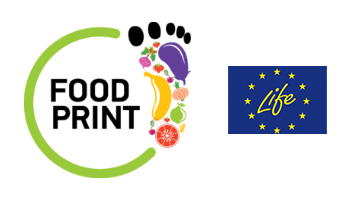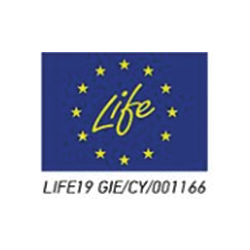Results
The FOODprint campaign aims to achieve meaningful results that support the efforts Cyprus is making to achieve its goals to reduce food waste.
The results result from the campaign’s actions implemented throughout its duration from September 2020 to April 2023.
The results stand out through a series of actions that provide primary and innovative material for knowledge and awareness raising.
They can also be useful for mobilising stakeholders to bring about meaningful change towards reducing waste.
Actions
The FoodPrint campaign implements a series of surveys – at the beginning, in between and at the end of the project – on food waste in Cyprus.
The surveys are presented in the campaign activities.
Their most important findings are presented in consultations and briefings of citizens and stakeholders.
They are also used for communication purposes and are included in the information and training materials.
1st Survey – Baseline Survey
2nd Survey – Interim
Online surveys
- Online Survey – March 2023 (12th)
- Online Survey – November 2022 (11th)
- 10th online survey on food waste
- Online Survey – July 2022 (9th)
- Online Survey – June 2022 (8th)
- Online Survey – April 2022 (7th)
- Online Survey – February 2022 (6th)
- Online Survey – November 2021 (5th)
- Online Survey – August 2021 (4th)
- Online Survey – (3rd)
- Online Survey – (2nd)
- Online Survey – (1st)
Mapping involves the recording of legislation, statistics and initiatives
In order to map the current situation of food waste in Cyprus, the FoodPrint campaign is conducting a series of consultations with professionals in the hospitality, catering and food service sector, local authorities and non-governmental organisations (NGOs).
The aim is to actively consult, feedback and engage businesses, local authorities and NGOs in the overall effort to reduce food waste.
Through the consultations it was possible to gather in one report valuable information and to document the challenges in managing food waste.
The FOODprint campaign has produced a Guide to Good Practices and solutions for reducing food waste, improving the use of raw materials and saving resources.
This Guide includes policies and suggestions that support the smooth integration of a business into the Circular Economy.
The FOODprint campaign prepared information material with information for every informed citizen.
An information leaflet and a poster are at your disposal.
Together with simple tips to reduce food waste.
- The composting process
- Leaflet for households
- Leaflet on good practices
- Handbook “How to reduce waste”
- How to reduce waste – electronic version
Online Courses for Primary and Secondary School
The courses aim to inform, raise awareness and, above all, educate students.
They include topics related to food production and waste, food safety, food security, food waste management and reduction, composting, responsible consumption, adoption of sustainable practices to reduce food waste.
The courses are designed to provide unique pedagogical learning experiences through games, quizzes, learning scenarios. They can be used by both teachers and students both at school and at home.
The design of the lessons provides opportunities for immediate feedback in relation to the topics each lesson addresses; through interactive applications it contributes to reflective learning, reflection and the development of critical thinking.
The online courses are relevant to Primary Education (grades 5 and 6) and Secondary General Education (Gymnasium cycle).
They are of one (1) and two (2) teaching periods and are offered at the school site by the staff of the Environment and Sustainable Development Education Unit of the Ministry of Education of Cyprus.
Education of students and students
The educational courses for students and pupils aim to present different aspects of the food waste problem at international and European level.
They make use of links to the results of surveys and other studies of the FOODprint campaign.
They include an interactive discussion with students and pupils and a screening of the campaign’s videos.
The FOODprint Partnership Platform aims to create a network for social food donation between food donors and social organisations. By registering on the Platform, each interested party helps to reduce food waste and improve food management.
The Food Wastage Calculator is an innovative electronic tool for easy measurement of wastage based on a list of foods we usually consume.
It measures economic costs, social costs and environmental costs.
The measurements help to better understand the problem and its impact.
The results motivate us to raise awareness, learn more about good practices and reduce our footprint.
Click here for more information.
Transfer of knowledge, replication and networking
The FOODprint campaign developed the«Transfer of Knowledge and Replication Plan and implemented it through a series of Networking Activities.
The aim of this Plan was to transfer knowledge and offer solutions to a wide range of stakeholders who would like to implement similar communication and awareness-raising actions on issues related to reducing food waste.
The FOODprint campaign contacted public and private bodies, organizations, and NGOs, both in Cyprus and in the rest of the European Union.
This Plan has included knowledge gained from the FOODprint campaign and other initiatives in the EU, as well as lessons learned on how the activities and products of the campaign can be used by other stakeholders.
The attachment includes presentations and a list of the Networking Activities already conducted and provides the opportunity to transfer knowledge of the FOODprint campaign.
The full report is in Greek here
FOODprint campaign to reduce food waste in Cyprus
Our activities, our achievements!
The FOODprint campaign has been completed, leaving its own “fingerprint” on Cyprus’ effort to reduce food waste, change culture, education, and awareness, and introduce best management practices in businesses and households.
Find out about all the activities, deliverables, and results of our campaign.
The FOODprint eBook in Greek and in English, is the electronic booklet summarising everything we have done, many of which are available online for citizens and stakeholders.
More information:
Opinion and Action | [email protected]
The FOODprint campaign organises specific activities aimed at transferring knowledge, replicating and sharing experiences within the European Union and promoting recommendations, good practices and solutions to stakeholders to better manage food waste.
Through these activities, the FOODprint campaign seeks to build on the knowledge gained by studying other LIFE projects and initiatives to reduce food waste in Europe and internationally.
At the same time, the FOODprint campaign promotes its own experiences and good practices during the implementation of the project to stakeholders in Europe and Cyprus.
The FOODprint campaign developed the«Transfer of Knowledge and Replication Plan and implemented it through a series of Networking Activities.
The aim of this Plan was to transfer knowledge and offer solutions to a wide range of stakeholders who would like to implement similar communication and awareness-raising actions on issues related to reducing food waste.
The FOODprint campaign contacted public and private bodies, organizations, and NGOs, both in Cyprus and in the rest of the European Union.
This Plan has included knowledge gained from the FOODprint campaign and other initiatives in the EU, as well as lessons learned on how the activities and products of the campaign can be used by other stakeholders.
The attachment includes presentations and a list of the Networking Activities already conducted and provides the opportunity to transfer knowledge of the FOODprint campaign.
The full report is in Greek here
The FOODprint campaign has been completed, leaving its own “fingerprint” on Cyprus’ effort to reduce food waste, change culture, education, and awareness, and introduce best management practices in businesses and households.
Find out about all the activities, deliverables, and results of our campaign.
The FOODprint eBook in Greek and in English, is the electronic booklet summarising everything we have done, many of which are available online for citizens and stakeholders.
Click the Flipbook

